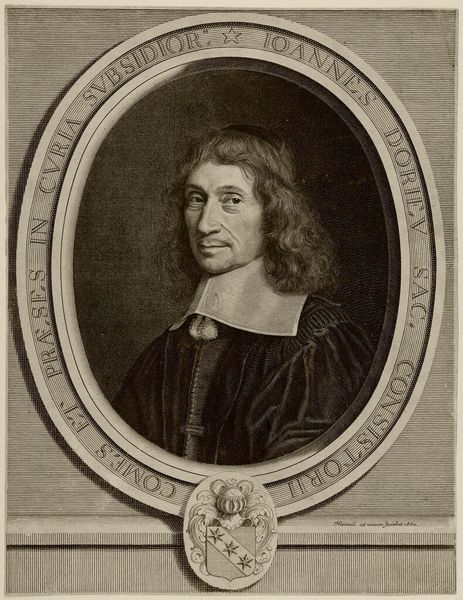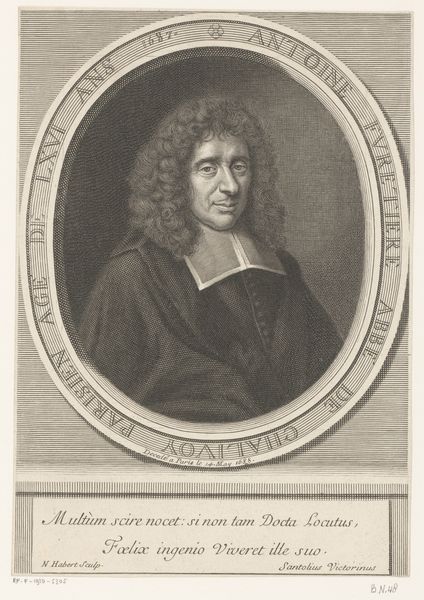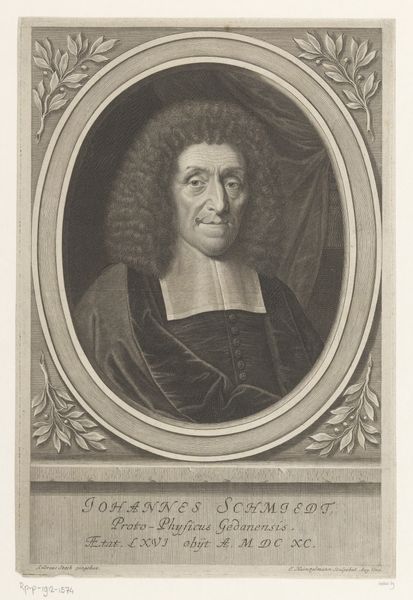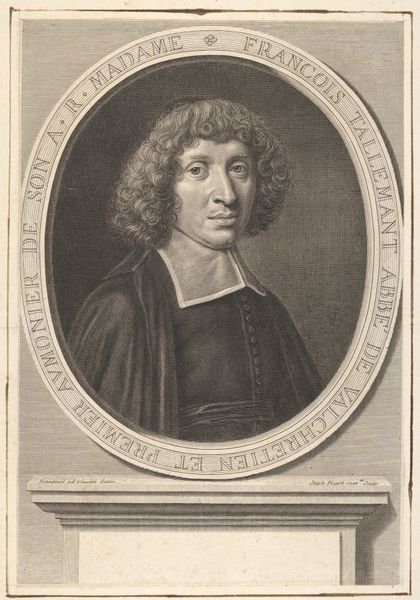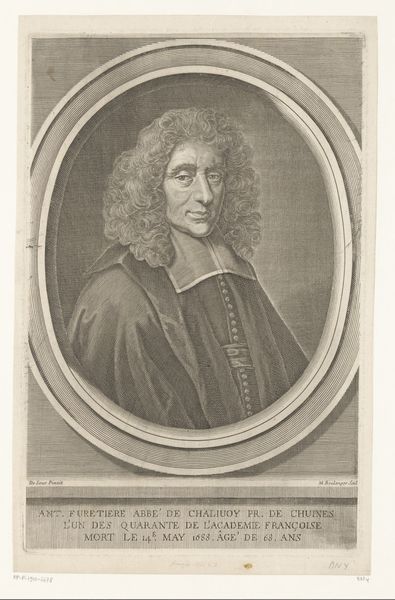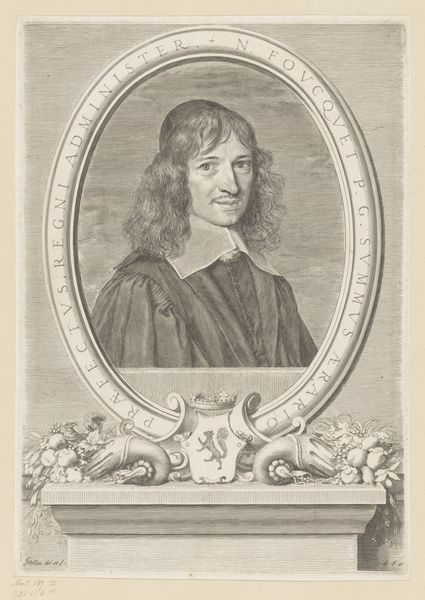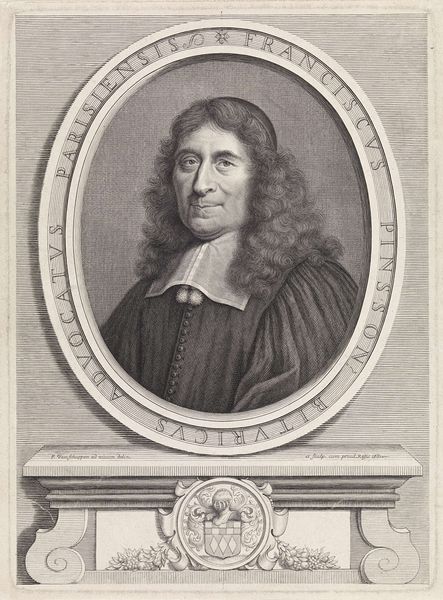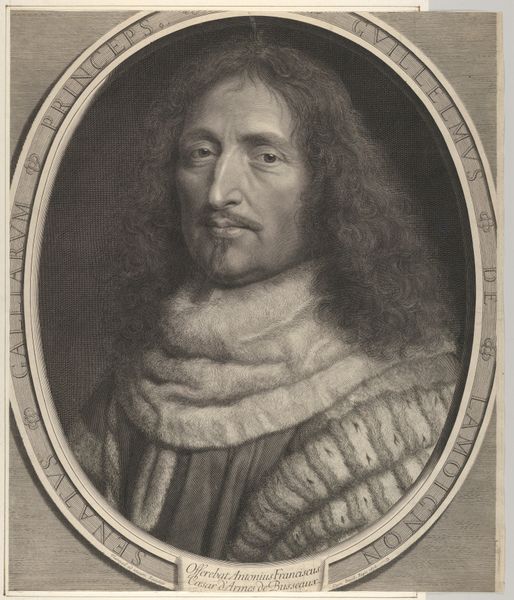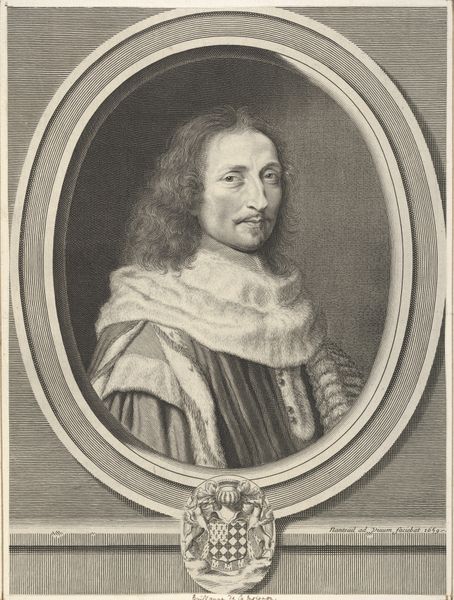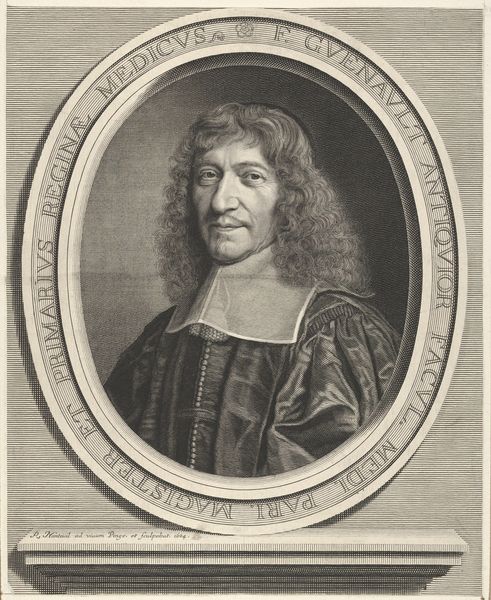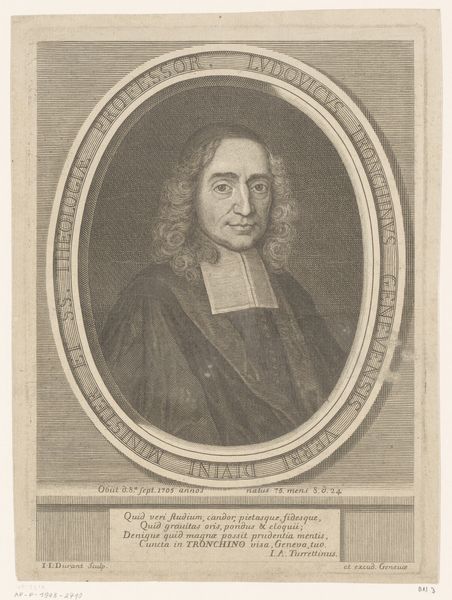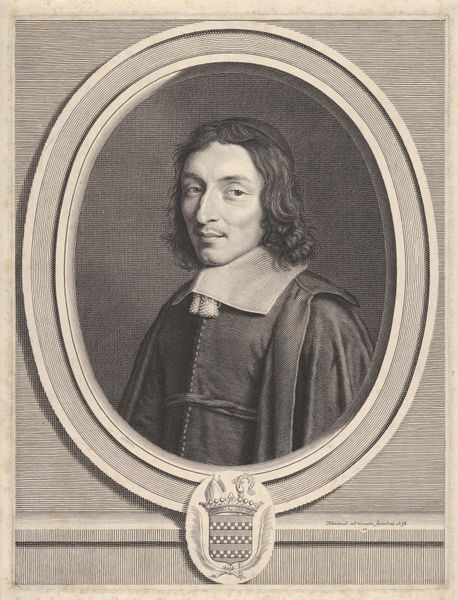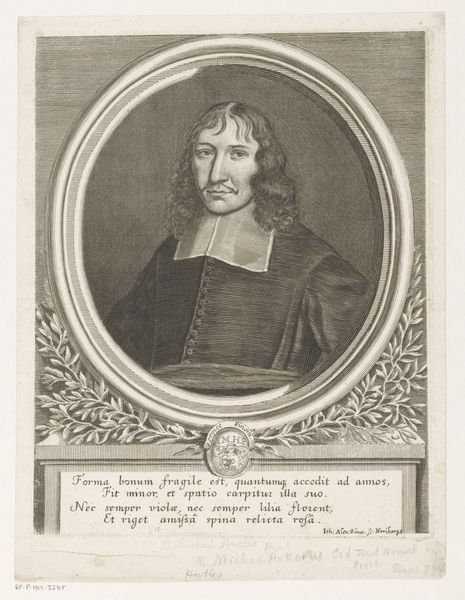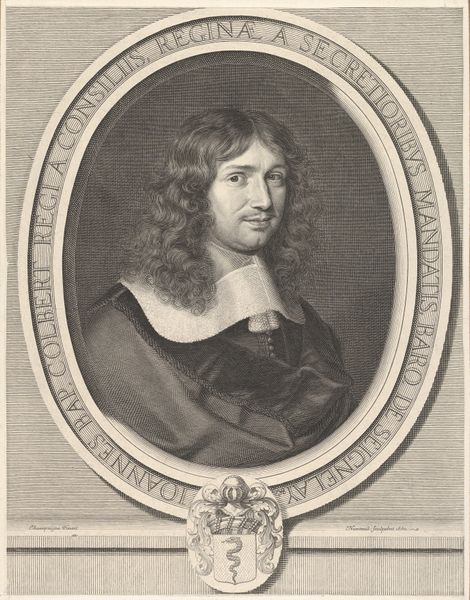
drawing, print, etching
#
portrait
#
drawing
#
baroque
# print
#
etching
#
men
Dimensions: Sheet: 12 7/8 × 9 15/16 in. (32.7 × 25.3 cm)
Copyright: Public Domain
Curator: This engraving by Robert Nanteuil, titled “Jean Dorieu,” dates back to 1660. It resides here at the Metropolitan Museum. What strikes you initially? Editor: The sheer discipline required to produce this kind of detail in an engraving—it’s practically a feat of manufacturing, isn’t it? The crispness of the line and the subtle variations in tone achieve such a sense of presence and volume that I'm genuinely impressed by how effectively it replicates the smooth gradations and sheen of those velvety dark textiles! Curator: I love that. It *feels* meticulous, doesn't it? Look at his eyes – slightly sad, knowing. Dorieu, whoever he was, seems almost melancholic, gazing at some unseen horizon, pondering a lost love, perhaps, or theological matter? His shoulders and soft cap frame him like a halo, making me wonder what burdens, beliefs, and convictions he might harbor... Editor: He’s a "Conseiller au Conseil Souverain" (Counselor of the Sovereign Council, an historical institution of French Canada.)— we can surmise, then, his dress signifies something like “management class” through production and labor systems. It feels significant to me that the materiality conveys this identity so directly. Curator: Exactly. But the real genius lies in Nanteuil's almost photographic detail. Look at the way light falls across his face, catching the gentle wrinkles around his eyes, almost like whispers of time etched onto his skin... Does it make you feel strangely moved, too, by our shared transience here? Editor: Definitely the textural details draw me into his immediate experience. This man surely oversaw many industries – forests of paper! Forging iron! I'm also captivated by the precision of Nanteuil’s approach, the sharp details cut with dedicated steel, considering this in terms of his studio and materials... How fascinating! Curator: Thinking of time, and craftsmanship... what endures when everything, inevitably, fades? This is also very compelling because Nanteuil wasn’t portraying royalty, nobility, or a celebrated military commander. No, Jean Dorieu, while clearly affluent, probably toiled and struggled, same as us… He becomes human, vulnerable—a reminder, if we need one, of how ephemeral fame actually is. Editor: So apt – particularly as that truth of "shared transience" permeates his garments and the print work. Robert Nanteuil certainly worked efficiently here... It makes you really think. Curator: Doesn't it? It leaves me contemplative and maybe a little softer as I leave.
Comments
No comments
Be the first to comment and join the conversation on the ultimate creative platform.
